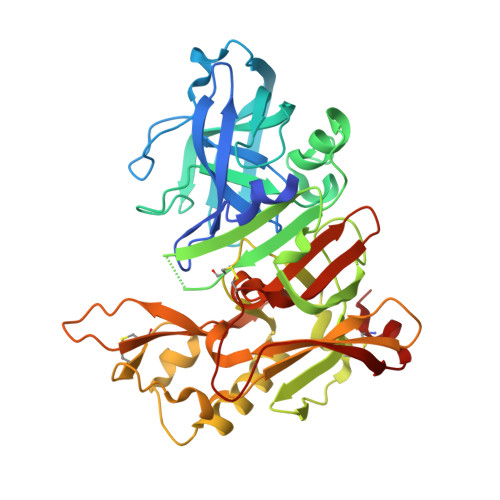D3R grand challenge 4: blind prediction of protein-ligand poses, affinity rankings, and relative binding free energies.
Parks, C.D., Gaieb, Z., Chiu, M., Yang, H., Shao, C., Walters, W.P., Jansen, J.M., McGaughey, G., Lewis, R.A., Bembenek, S.D., Ameriks, M.K., Mirzadegan, T., Burley, S.K., Amaro, R.E., Gilson, M.K.(2020) J Comput Aided Mol Des 34: 99-119
- PubMed: 31974851
- DOI: https://doi.org/10.1007/s10822-020-00289-y
- Primary Citation of Related Structures:
5QCO, 5QCP, 5QCQ, 5QCR, 5QCS, 5QCT, 5QCU, 5QCV, 5QCW, 5QCX, 5QCY, 5QCZ, 5QD0, 5QD1, 5QD2, 5QD3, 5QD4, 5QD5, 5QD6, 5QD7, 5QD8, 5QD9, 5QDA, 5QDB, 5QDC, 5QDD - PubMed Abstract:
The Drug Design Data Resource (D3R) aims to identify best practice methods for computer aided drug design through blinded ligand pose prediction and affinity challenges. Herein, we report on the results of Grand Challenge 4 (GC4). GC4 focused on proteins beta secretase 1 and Cathepsin S, and was run in an analogous manner to prior challenges. In Stage 1, participant ability to predict the pose and affinity of BACE1 ligands were assessed. Following the completion of Stage 1, all BACE1 co-crystal structures were released, and Stage 2 tested affinity rankings with co-crystal structures. We provide an analysis of the results and discuss insights into determined best practice methods.
Organizational Affiliation:
Drug Design Data Resource, University of California, San Diego, La Jolla, CA, 92093, USA.















